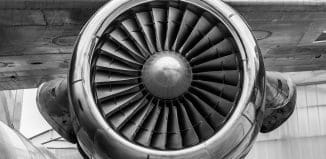New Technique To Increase UAV Manoeuverability
This post is also available in:  עברית (Hebrew)
עברית (Hebrew)
Researchers at the Nanjing University of Aeronautics in China have developed a new technology that enables Unmanned Aerial Vehicles (UAVs) to safely maneuver in mountain regions.
Usually, UAVs designed for plateau terrain missions are equipped with high span ratio wings that provide more lifting force at relatively low airspeeds. In this configuration, however, UAVs tend to lose out in manoeuverability, require a larger turning radius, and struggle to maintain altitude during sharp slope turns due to the lifting force produced by the wings sharply diminishing when the bank angle is large.
This reduction in flight performance poses risks to missions in mountain regions.
This issue can be addressed by variable thrust direction (VTD) technology, which allows manipulation of the direction of thrust in relation to the fuselage of the aircraft by thrust vectoring control (VCT). Most of the work in this area, however, is geared to jet engines and cannot be applied to conventional propeller engine aircraft.
The Nanjing University researchers have now developed a new VTD mechanism for conventional propeller engine UAVs. Their work would allow for redirecting a portion of the thrust from the propeller in other directions than the normal axial orientation.
The proposed VTD mechanism is made up of a propeller engine mounted on a two-dimensional rotation apparatus driven by two servo actuators. This way, both the azimuth and altitude angle of the disk can be controlled, allowing for a change in the direction of thrust from the propeller.
The introduction of VTD capabilities to a propeller engine UAV, the manoeuvrability of the aircraft is greatly increased, allowing it to perform missions in more complex terrain.
The research was published in the journal Science China Information Sciences.





























